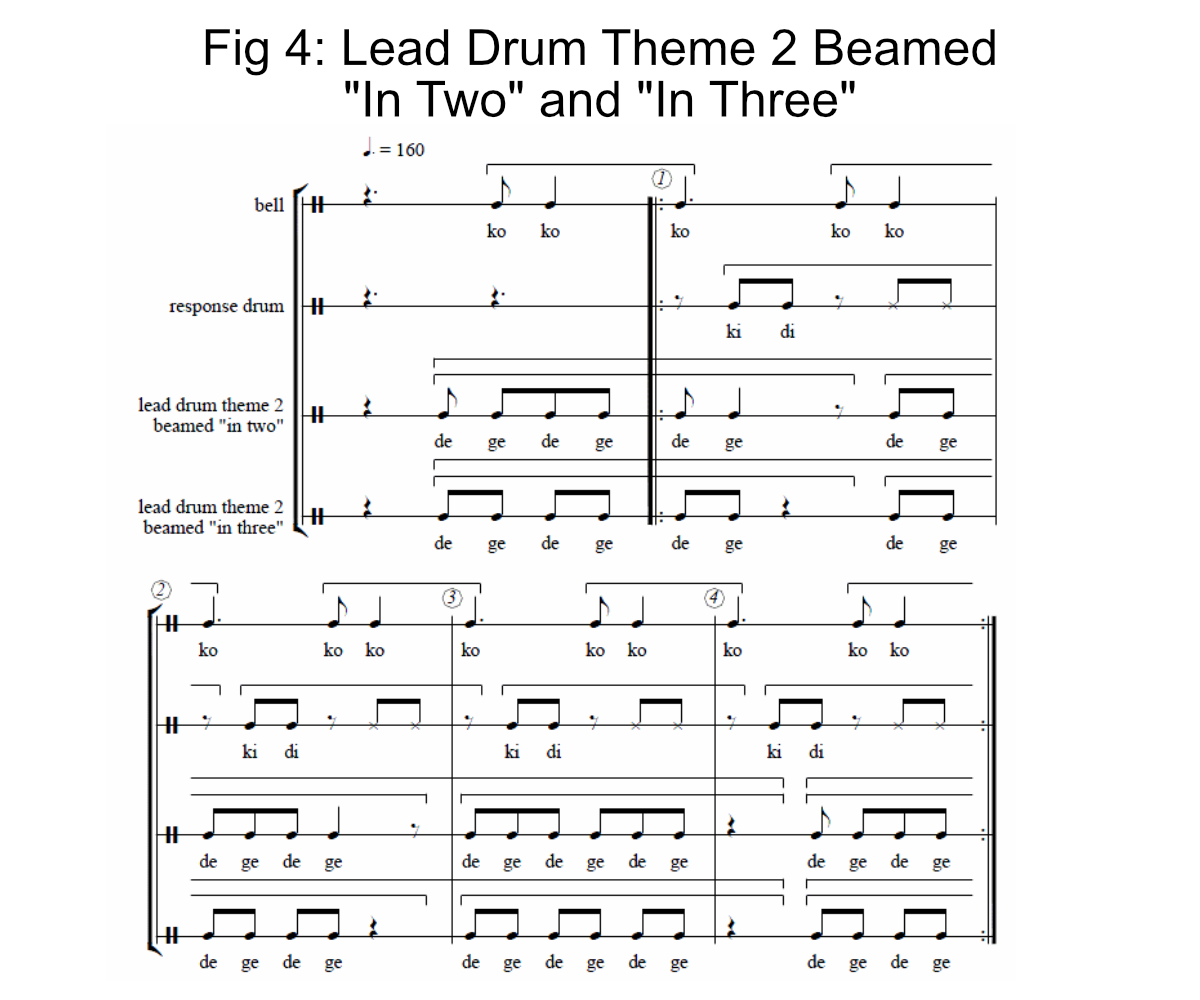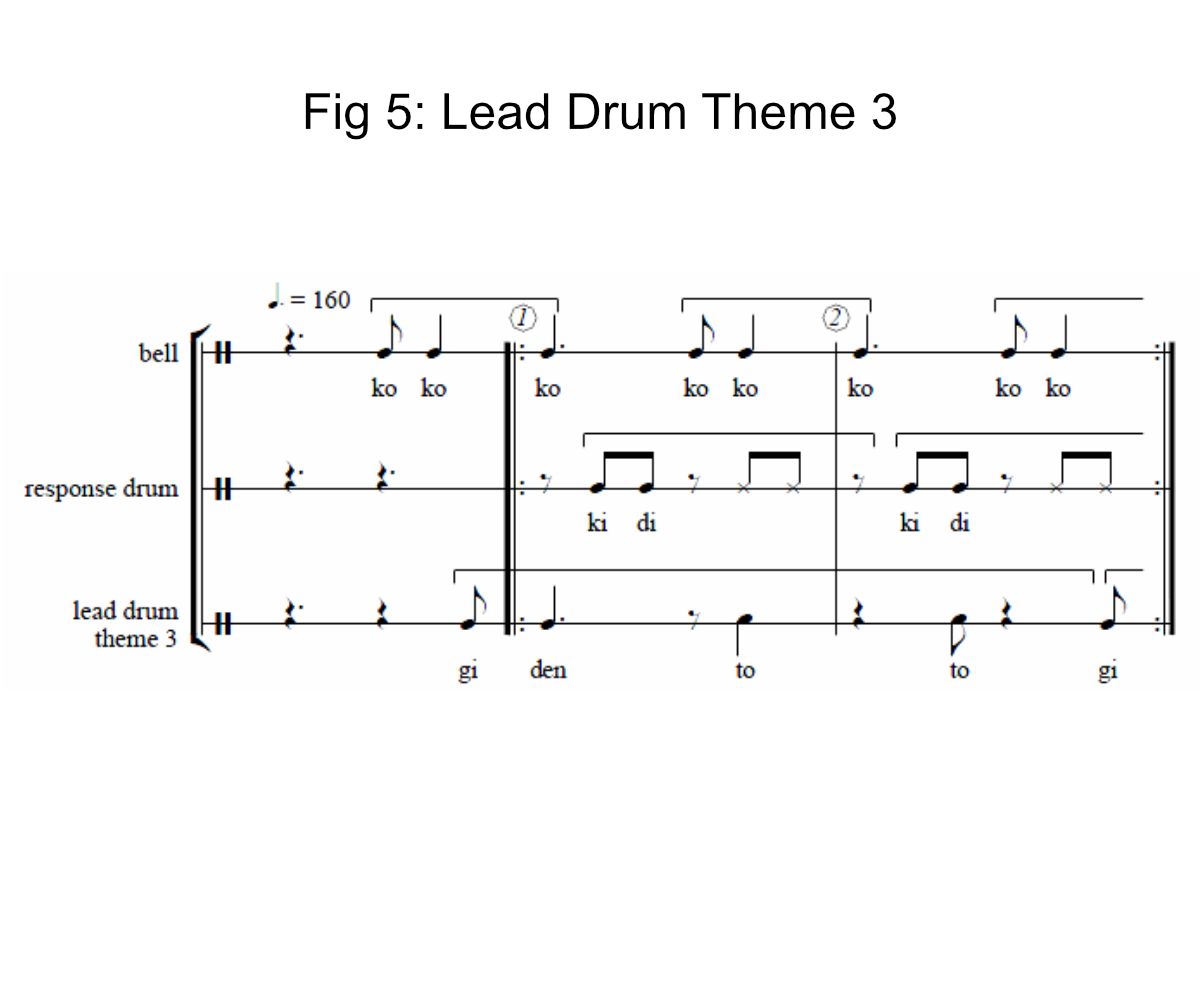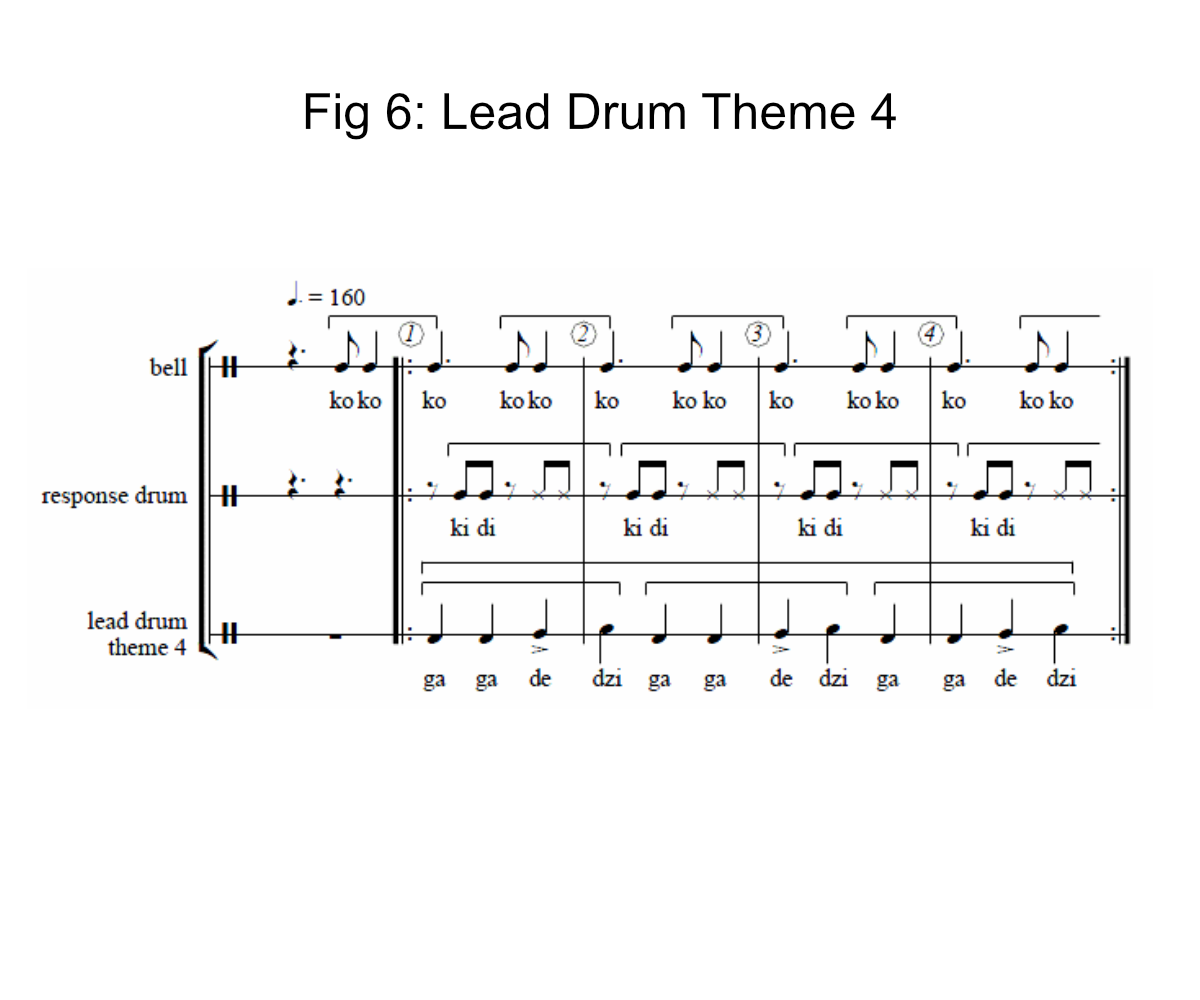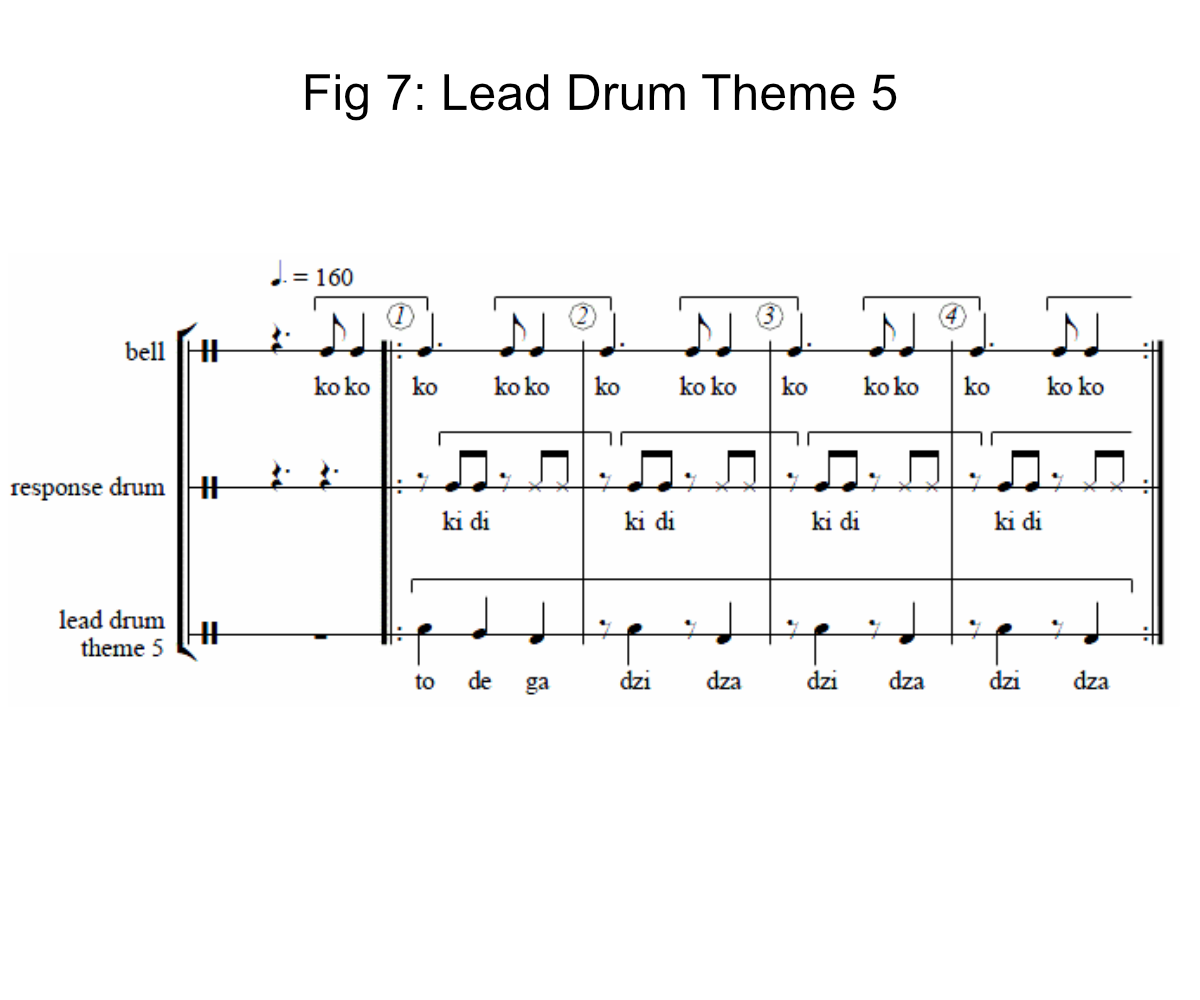Listening Guide
| time | lead drum |
|---|---|
| 0:00 | theme 1 |
| 0:15 | theme 2 |
| 0:28 | theme 3 |
| 0:47 | theme 1 |
| 0:56 | theme 4 |
| 1:11 | theme 3 |
| 1:18 | theme 1 |
| 1:25 | theme 5 |
| 1:53 | theme 1 |
| 2:03 | theme 2 |
| 2:20 | theme 3 |
| 2:32 | theme 4 |
| 2:41 | theme 3 |
| 2:47 | theme 1 |
| 2:57 | theme 5 |
| 3:12 | theme 1 |
| 3:25 | theme 2 |
| 3:34 | theme 1 |
| 3:47 | theme 3 |
| 4:04 | theme 1 |
| 4:11 | theme 4 |
| 4:19 | theme 1 |
| 4:27 | theme 5 |
| 4:36 | theme 1 |
| 4:39 | ending signal |
Musical Notation Figures
Fully Mixed Item
Mixer
Use the mixer controls to change instrument levels and skip to particular timestamps.
NOTE: We recommend not using Safari as it sometimes exhibits track synchronization problems.








Performance Comment
Before recording the lead drum part, I decided to play through the material three times, which resulted in a rendition in three parts (0:00-1:53, 1:53-3:12, and 3:12-end). In the first pass I began by moving through themes 1, 2 and 3 in sequence (0:00-0:47). I often mess up the timing of theme 2, so I was relieved that I seemed to have played it correctly! For me, moves from themes 2 to 3, 3 to 1, and 1 to 4 flow easily so I was confident of playing well. Theme 5, however, requires a lot of concentration because of its constant offbeat accentuation on second time-points within ternary beats. In the second part, I spontaneously decided to move directly through themes 1-4 but since it is musically awkward to conjoin themes 4-5, I returned to theme 1 before playing theme 5. I changed the order of presentation again in the third part. Here, I use theme 1 as a “home base” from which to launch the other four themes, i.e., 1-2, 1-3, 1-4, and 1-5.
As I prepared to record the other parts I knew that the challenge lay in the permanently offbeat rhythm of high-pitched drum 2 and the response drum. The rhythm of rattle and high-pitched drum 1 is identical to bell, which makes them rather easy to play. I concentrated on giving full volume and rich timbre to the strokes that coincide with bell stroke 2 because I know that by mentally orienting to that moment in the temporal cycle, you can “flip” the music’s gestalt. My playing of the high-pitched drum 2 was acceptable, I thought, but I remain concerned that my timing is not as rock solid as a good born-in-the-tradition drummer. I recorded the response part with bell and ternary beat on the headphones, i.e., without hearing the lead drum, because I was worried that theme 5 would throw me off. As it turned out, I managed to stay in the groove pretty well. Listening back to the full mix, I once again am impressed with the musical imagination of the composers of Husago: the fit of response and lead drums is very cool.